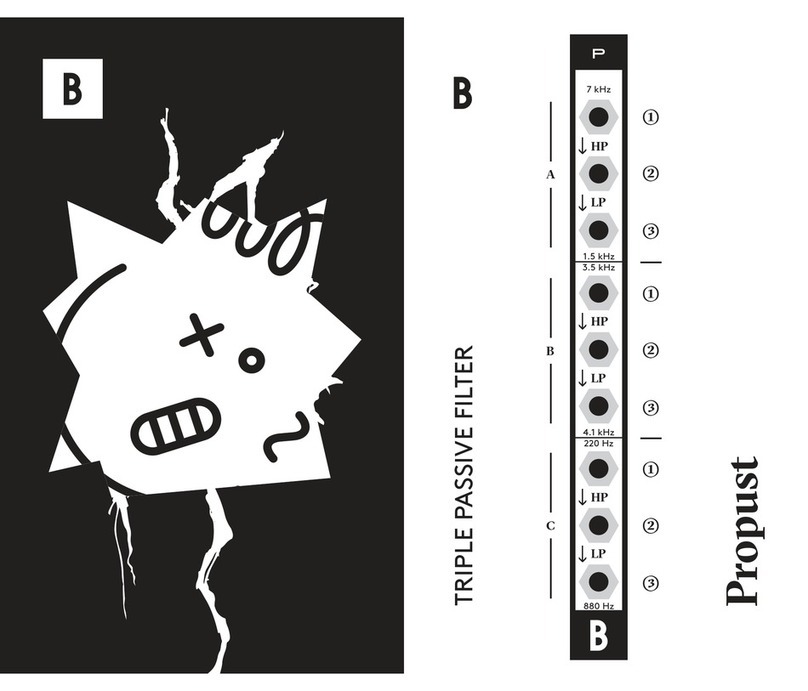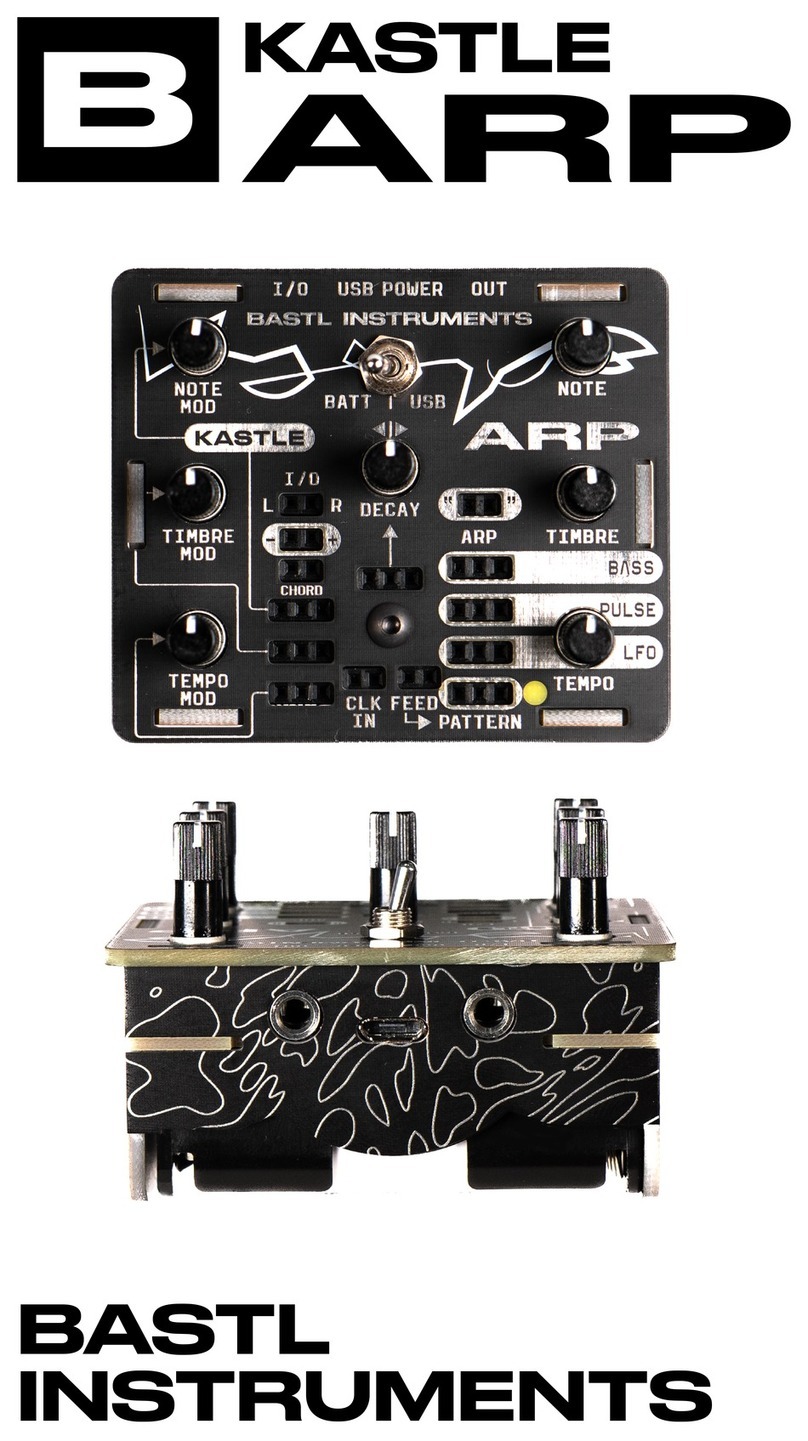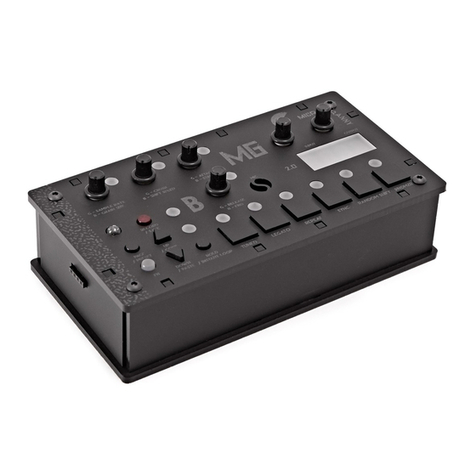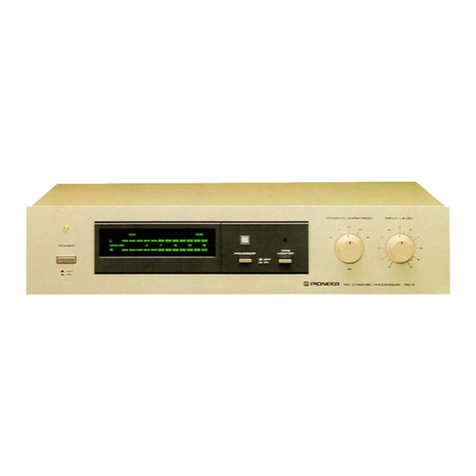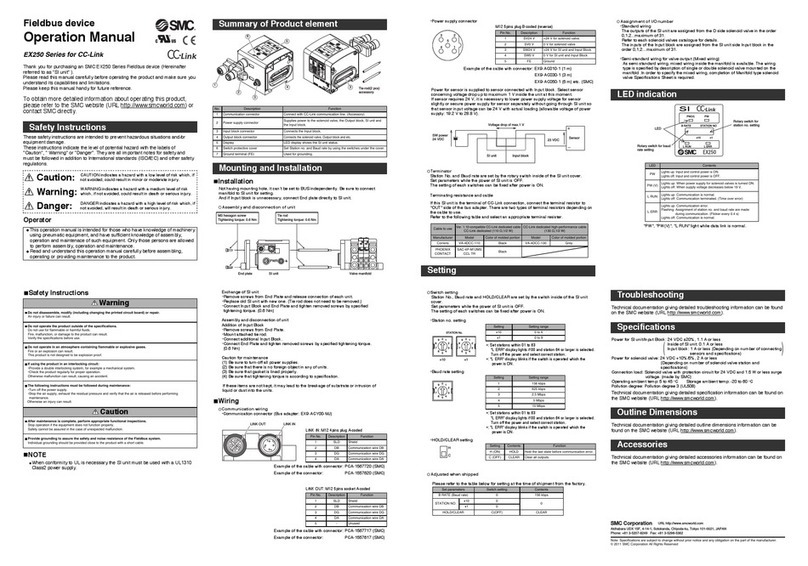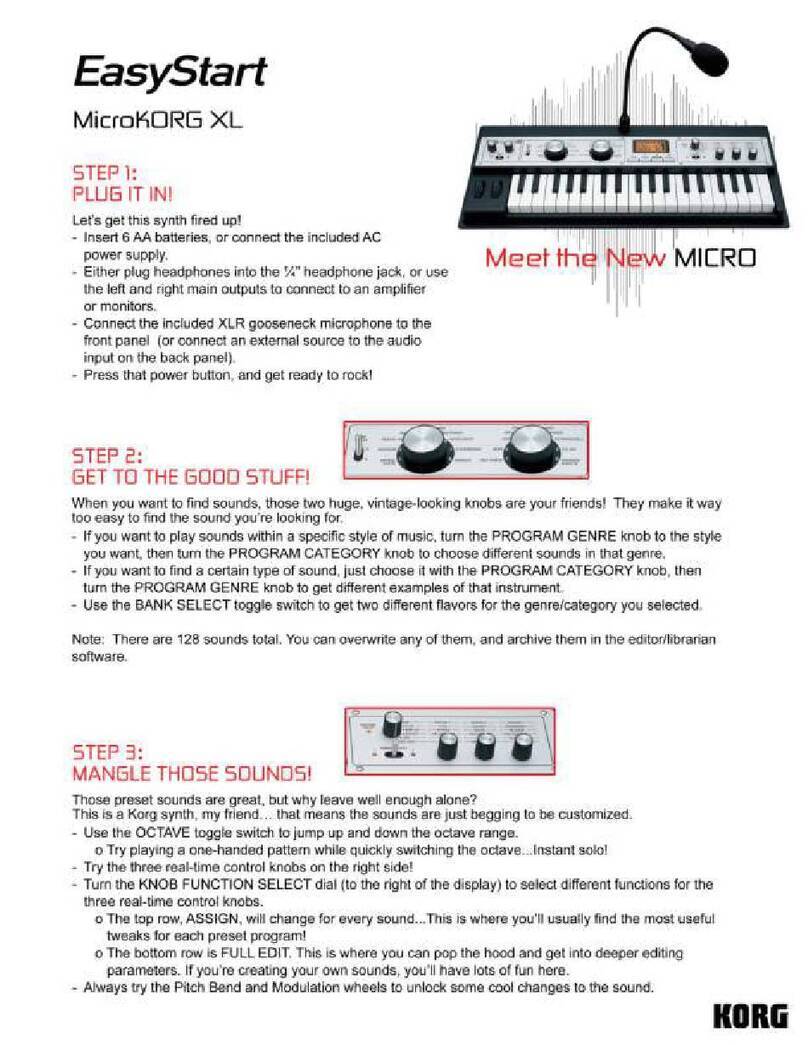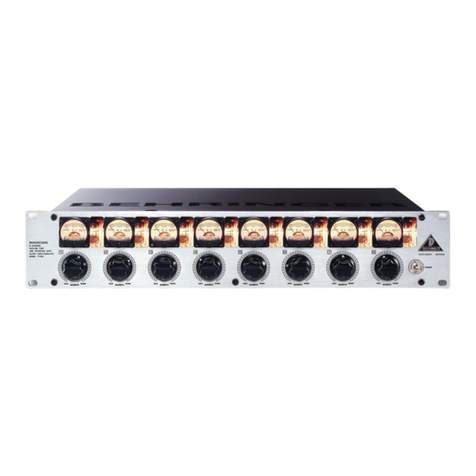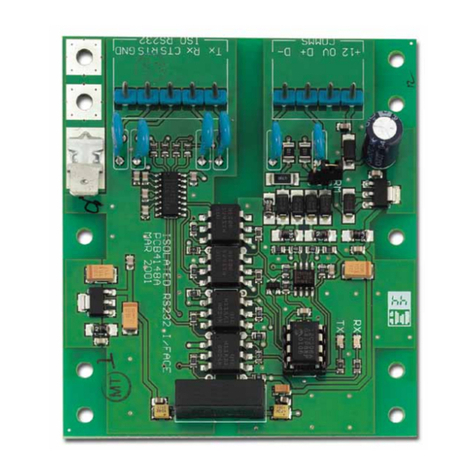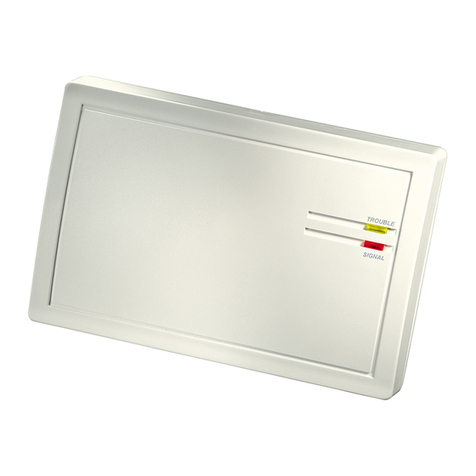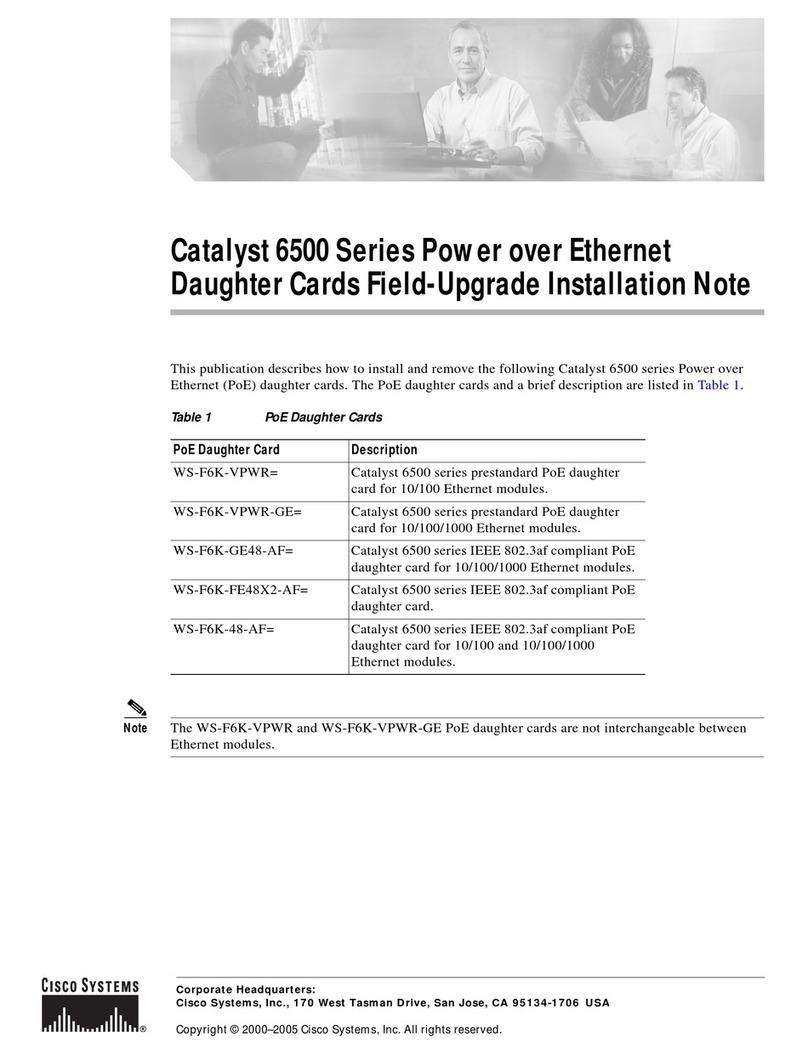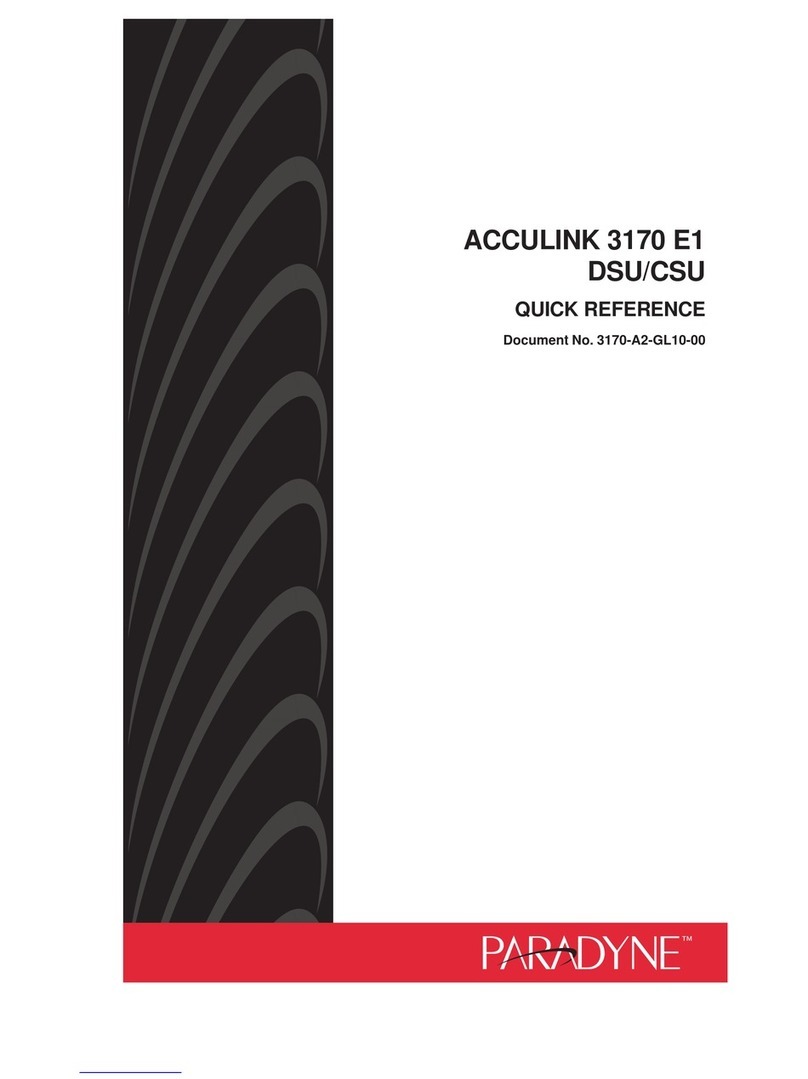Bastl tromso User manual

last update: 9. 9. 2016
TROMSØ v1.0 - Assembly Guide
bastl-instruments.com
INTRODUCTION
This guide is for building Tromsø module from Bastl Instruments. It is good to have basic soldering skills
and to be able to identify electronic components before starting this kit. However if you have never
soldered before, check out this tutorial first . We even included some of the best quality solder to help
1
you solder everything faster and better.
The Tromsø kit consists of two boards. All the parts comes in three bags separated for Top board,
Bottom board and Assembly parts. See Bill of Materials (BOM) for detailed list.
1 http://www.instructables.com/id/How-to-solder/
1

Before starting this kit, prepare the following tools:
● Soldering iron (15-20W)
● Multi-meter
● Flush cutters
● n2. hex screwdriver or allen key (enclosed with kit)
● Phillips screwdriver
● Wrench No. 8
● Protective eyewear
After the Tromsø is built it should be calibrated. You can use your mobile device with installed tuner
application for this purpose. For details see the Calibration part below.
We suggest that you work in a clean and a well lit and ventilated environment to avoid accidents or
losing any of the small components.
Also briefly go through this guide and make sure that you understand all the steps.
BOTTOM BOARD
You will start with the bottom board PCB. Before you will start soldering, take your time and find all the
resistors values using a multimeter (or you can check the color codes if you are seasoned enough):
2
-470R (1x), 1k (4x), 10k (3x), 15k (1x), 30k (1x), 33k (1x), 100k (8x), 150k (1x), 220k (1x).
Be careful to insert these resistors on the right place and solder them. Then snip the leads close to the
PCB (be sure to make this step on all remaining leads in the course of this guide).
After that solder the diodes. There are four of them (2x 1N4148, 2x 1N4007). Be careful, diodes are
polarized! Make sure that the marking ring on the diode body matches the marking on the circuit board.
2 https://learn.sparkfun.com/tutorials/how-to-use-a-multimeter/measuring-resistance
2

Now you can move to soldering the IC sockets (be aware of the right direction, there is a notch on the
sockets that has to match with the sign on PCB):
-8 pin DIL (1x)
-14 pin DIL (2x)
-16 pin DIL (1x)
Now let’s do some capacitors. According to the size insert and solder them in the following order:
-100nF ceramic capacitors (11x, marked “104” on itself)
-100pF ceramic capacitors (2x, marked “101” on itself)
-47nF/63V WIMA polyester capacitor (1x)
-560pF ceramic capacitor (1x, marked “561” on itself)
-10uF electrolytic capacitor (2x, there is a plus (+) sign on the PCB that has to match the longer
lead of the electrolytic capacitors)
Turn around the PCB to solder the 2x5 pin
male header and solder it. Be careful to solder
the headers straight. You may first solder one of
the pin, take the board in your hand and re-heat
that pin while you are adjusting the header
straight. Add also the trimmer.
3

Then you can solder the fuses. There are just
two of them. They look quite similar to a
ceramic capacitors. Place them in the “PTC”
rectangular).
To finish soldering of the bottom board you
have to connect the female headers with the
male headers from the Top board bag. Use
your flush cutters to get two pieces of 1x9
female pinheaders (you will always lose one
pin when cutting the female headers, so be sure
to cut it always after the last required pin).
Then take the Top PCB and mount the hex
spacers on it: nut-screw spacer on the top
connected with the nut-nut spacer from the
bottom. Place the headers on the bottom board
facing the female parts downwards. Now connect the boards together and secure them with the
screw from the bottom. Finally you are ready to solder all the male and female headers.
Disconnect the boards. Don’t forget to place the ICs into the sockets (2x TL074, 1x V2164D, 1x LF398).
There is a notch on each IC that has to match with the notch on the socket.
4

Great, you are done now with the bottom board! Before moving to the next one make the last check that
all parts are on the right place and every joint is properly soldered.
TOP BOARD
Now let’s do the top PCB. Again, start with the resistors:
-1k (2x), 33k (1x), 39k (1x), 100k (3x)
Then insert and solder some other parts (capacitor and transistor):
-470nF ceramic capacitor (marked “474” on itself)
-2N3906 transistor (the flat side has to match with the printing on the PCB)
Insert now all the other parts (jack connectors, potentiometers, switches and LED) but do not
solder them yet:
-100k linear potentiometers (2x, marked “B100k” on the PCB and on itself)
-200k linear potentiometer (1x, marked “B200k” on the PCB and on itself)
-Jack connectors (8x)
-Switches (2x)
-LED (1x, be careful to put the longer lead into the plus (+) hole)
Be careful to push the potentiometers right down to the PCB. Mount the spacers back again on the PCB.
Take the front front panel and lower it down on the board. Hold it together and mount it with the screw,
jack washers and nuts (you do not have to tighten them too much as you may damage the panel).
5

Then turn the unit facing with PCB
upwards. Make sure that everything
is properly aligned. Push the
switches and LED to be sure that
they come through the panel. Now
you are finally ready to solder all
these inserted parts.
FINAL ASSEMBLY
Congratulations! You have made it through. Now just connect the PCBs together, secure the spacers
with screws from the bottom and put the wooden knobs on.
Before you connect anything, make sure that your system is disconnected from power. Also double
check the polarity of the ribbon cable, the red cable should match the -12V rail both on the module and
on the bus board!
CALIBRATION
At last you have to do the calibration of Tromsø. You need a tool for measuring frequency and a little
screwdriver for turning the trimmers. You can use one of free tuner apps for mobile phones (e.g. Tuner
T1 for iPhone or Pano Tuner on Android worked pretty well in our testing).
So basically there is just one thing to calibrate: the volt per octave characteristics of the VCO
section when the attenuator is fully open.
6

Use Triangle output and amplify it yo so can hear it. Flip all the switches up. Set VCO RATE and
ThRESHOLD at twelve o'clock (as precisely as possible) and turn the ATTENUATOR at full. Now turn
on your tuner and adjust the trimmer until you will measure 240 Hz and that’s it! This process is
approximate but really close to the results of precise calibration that we do on our testing station. For
more precise calibration you have to connect your volt per octave source and play octaves (1 volt
differences) and listen if you hear an octave interval or measure if you get double frequency.
TROUBLESHOOTING
Check the F.A.Q. on our website first. If you are still in trouble the best thing is to take a nap! Especially
3
late at night! Then you can can send the detailed description of the problem with enclosed
that you are unable to make the module work on your own.
BILL OF MATERIALS
TROMSØ v1.0 BILL OF MATERIALS
SOLDERING_TOP_TROMSØ
qty
value
part
2
1k
R-EU_0204/5
1
33k
R-EU_0204/5
1
39k
R-EU_0204/5
3
100k
R-EU_0204/5
1
470nF
ceramic capacitor
1
2N3904
NPN, BULK
2
B100k
linear potentiometer
1
B200k
linear potentiometer
2
switch
8
jack connector
PJ-301BMB
1
difuse green 3mm
LED
1
18 pin
male
SOLDERING_BOTTOM_TROMSØ
qty
value
part
1
470R
R-EU_0204/5
4
1k
R-EU_0204/5
3
10k
R-EU_0204/5
1
15k
R-EU_0204/5
1
30k
R-EU_0204/5
1
33k
R-EU_0204/5
8
100k
R-EU_0204/5
1
150k
R-EU_0204/5
3 http://www.bastl-instruments.com/diy-kits-f-a-q/
7

1
220k
R-EU_0204/5
2
100pF
ceramic capacitor
1
560pF
ceramic capacitor
1
47nF/63V
WIMA polyester capacitor
11
100nF
ceramic capacitor
2
10uF
electrolytic capacitor
2
1N4148
DIODE-D-5
2
1N4007
DIODE-D-7.5
1
8 pin DIL
DIL socket - in foam
2
14 pin DIL
DIL socket - in foam
1
16 pin DIL
DIL socket - in foam
2
TL074
IC in foam
1
V2164D
IC in foam
1
LF398
IC in foam
1
10k
trimr
2
100mA
fuse
1
male 2x5
1
18 pin
female
ASSEMBLY_TROMSØ
qty
value
part
1
PCB Top
1
PCB Bottom
2
8mm
panel screw
2
6mm
screw
1
nut-screw
hex spacer
1
nut-nut
hex spacer
8
jack washers
8
jack nuts
1
allen key
3
pot knob
1
front panel
1
power cable 10-16pin
8
Table of contents
Other Bastl Recording Equipment manuals
